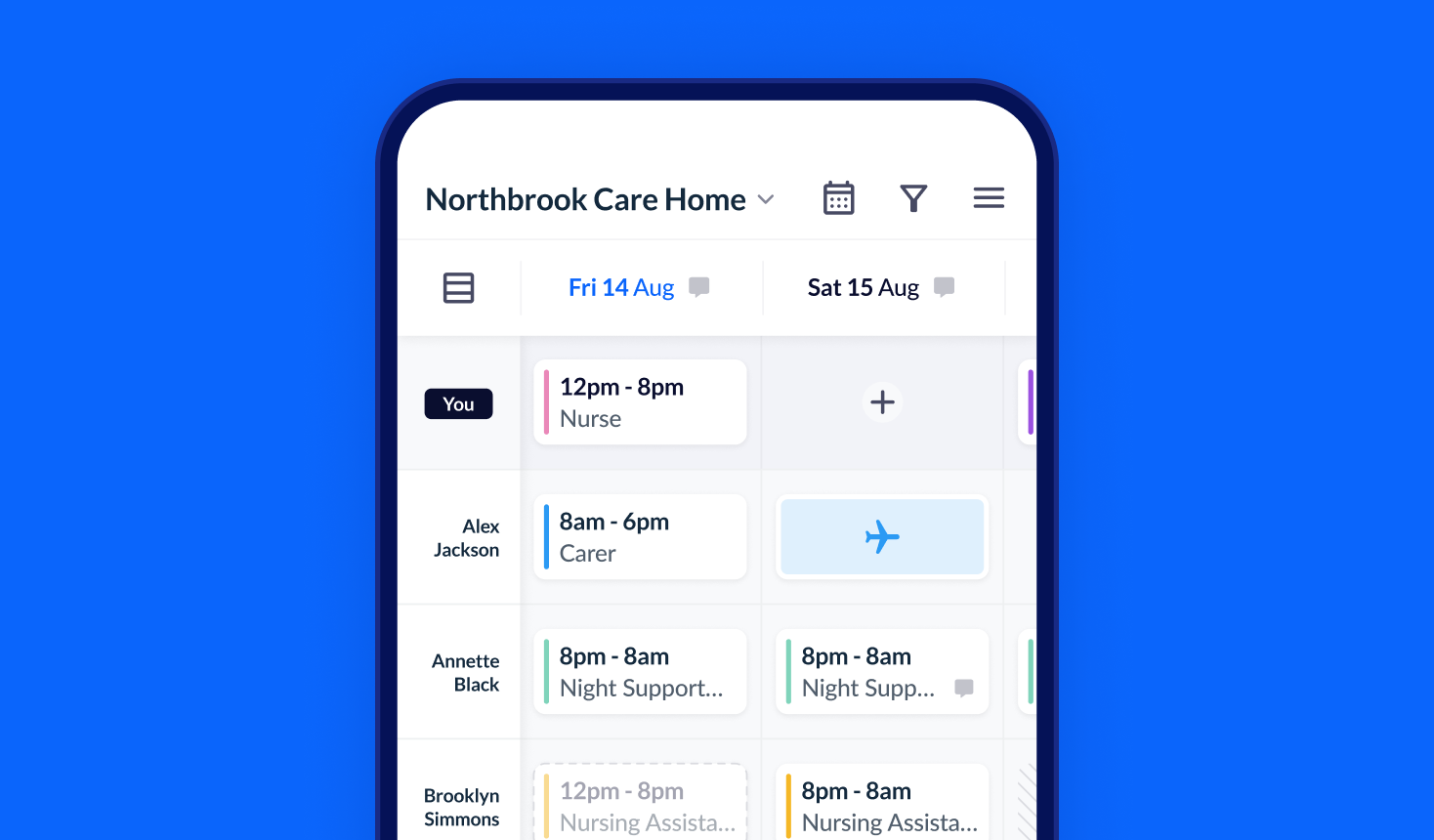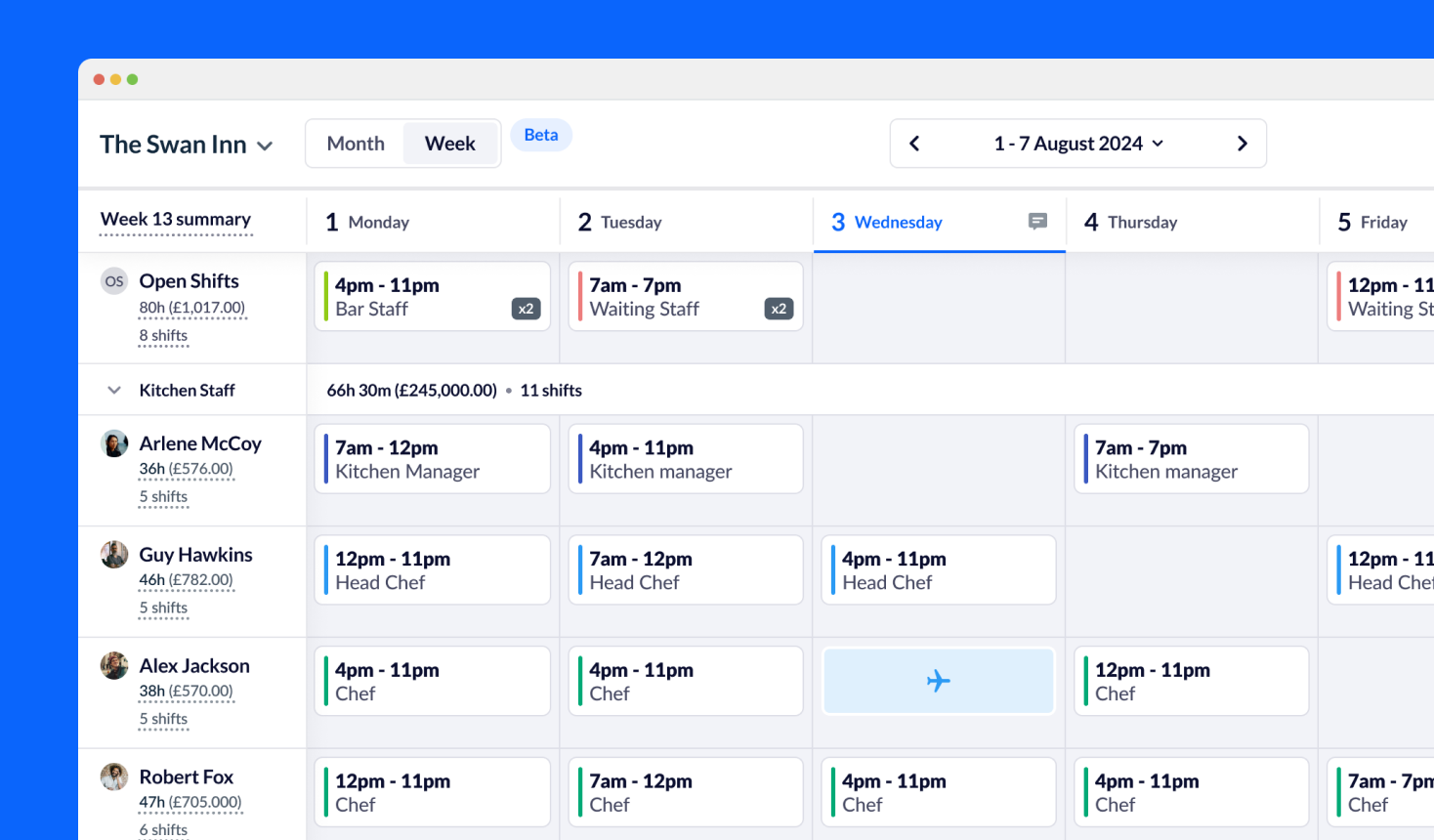Chapter 3
How to make changes to a published rota
Why having a flexible rota is important
The real test of rota management is when you need to make changes to a rota that’s already been published.
Unless your schedule’s set in stone, it’s likely that you’ll need to change things around fairly frequently. Updates can be required for all sorts of reasons:
- Unavailability
- Sickness
- Short notice leave requests
- Emergencies
- Sudden change in requirements (eg. a big party books in at your restaurant)
So having a flexible rota is vital. You need to have processes in place for managing all eventualities. For example, if a member of staff has the flu and you know they’re going to be off for a week, how would you update the rota?
You might:
- Try to find cover for today’s shift, usually by ringing around.
- Check the rota for the rest of the week, and decide if you need to find cover or make do with fewer staff.
- If you need cover, you’ll have to let other staff know that there are shifts up for grabs. You might do this through rota planning software, social media, or by calling them.
- Update the rota so all managers and employees know who’s in and when.
- Share or print the updated rota and archive the old one.
Not the most efficient process is it? It’s easy to see where errors could creep in — especially if you use paper rotas.
If you use a spreadsheet to manage your rota, this process will be a little easier. But you might need to use add-ons or build your own macros (small programs that automate certain tasks) to help with some of them.
If you use Google Sheets, we recommend using their ‘version history’ feature (File → Version History). Be sure to clearly name each version of the rota, so it’s easy to distinguish later. Excel has a similar tool.

Reducing your rota management workload
Typically, altering the rota is a pain because you have to do so much for every individual change. More often than not, it's the rota revisions that take the most time — and they also cause the most problems.
Making significant changes to how you plan your rotas is likely to reduce your workload long-term. But if you’re not ready for a complete change, then some tinkering will help.
Let’s start with small changes you could make pretty much immediately:
- Pin the most recent rota to the top of your company’s Facebook group or a Slack channel, so there’s never any confusion about versions.
- Change rota file names based on the publish date and whether or not they’re current or outdated.
- Create staff groups within your email system, based on role or team, so you only contact the relevant people when the rota changes.
Now for bigger, systemic changes that’ll save you even more time (and potentially, money).
Reducing your rota management workload through self-service rota planning
Just like self-service checkouts let customers do a lot of the hard work, self-service rota planning gives some rota-related tasks to your employees, either fully or partially. If that sounds terrifying, start small — you could ask your staff to arrange shift swaps themselves, or to find their own cover if they’re suddenly unavailable for a shift.

How rota planning software can further shrink your admin
To take this process further, you can use specialist software that’s designed to speed up and streamline every element of rota management.
Rota planning software lets you quickly reassign shifts as ‘open’, for example, and relevant staff are automatically notified when one or more of them is up for grabs. Once the shifts have been claimed, the rota is updated automatically. In fact, any changes you make within rota planning software are automatically shared with the relevant employees.
It’s also possible for staff to organise shift swaps within the software itself — managers can set the parameters for swapping, and approve or deny requests when they’re sent through.
Making substantial changes to your rota management processes can feel like too-big-a-job to tackle. But when you break down the benefits it offers your business, and how effectively these can reduce your workload, it feels much more like an opportunity worth taking.